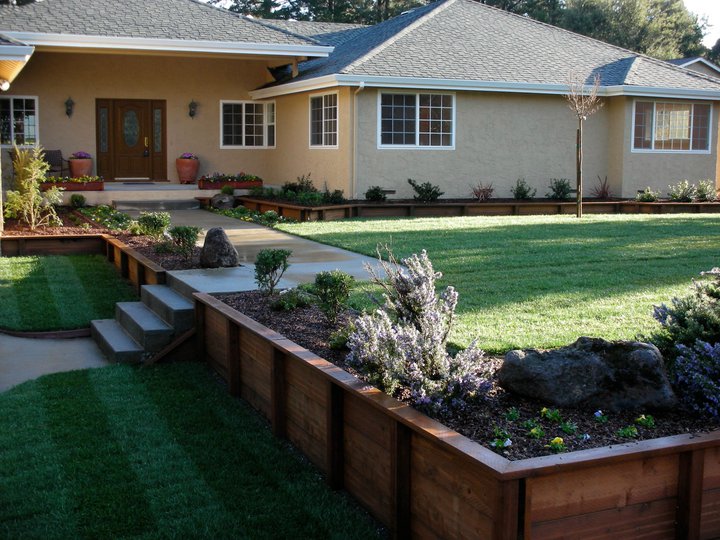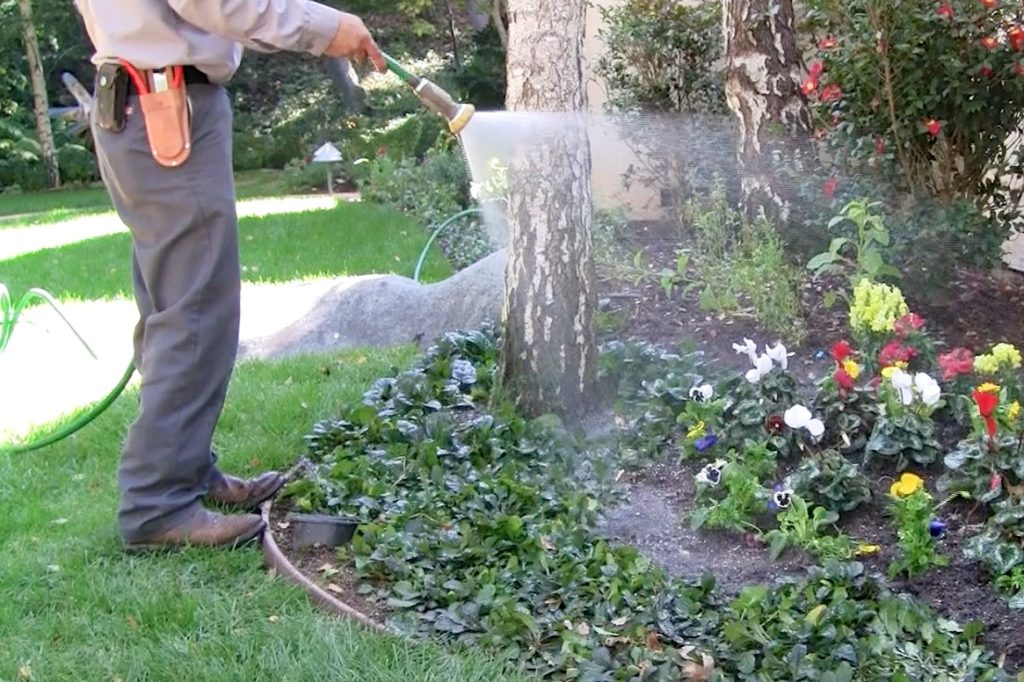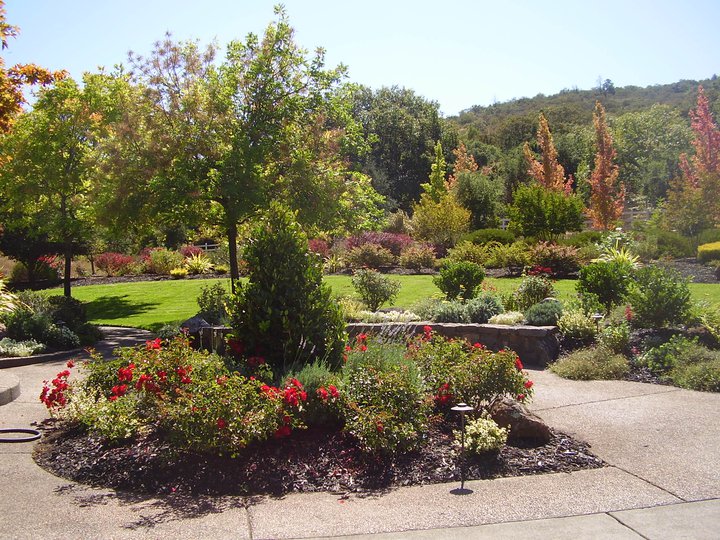
The Bay Area’s drought problems may be over (for now), but water conservation remains a high priority. Photo: Quilici Gardening ©2018
While drought conditions have subsided in the Bay Area, water conservation remains as important as ever. After all, there’s no telling what the future holds, and if the past has taught us anything, it’s that we can’t afford to take our most precious resource for granted. So, if you haven’t already taken steps to reduce your water consumption, now is the time.
According to sources, more than half of the total water usage in California households goes to yard and lawn irrigation. With this in mind, if you want to maximize the impact of your water-saving strategy, the first place you should look is outside your home. There are many ways to save water in your yard, but most can be boiled down to three primary actions:
- Amending incorrect watering practices
- Upgrading inefficient irrigation equipment
- Employing drought-tolerant techniques
To learn more about these three water-saving steps, we’ve asked five Diamond Certified Expert Contributors for their professional insights.

One of the biggest causes of landscape water waste is incorrect watering methods. Photo: American Ratings Corporation ©2018
Step 1: Amend incorrect watering practices
Let’s face it: many homeowners don’t know how to water their yards. Whether the result of faulty instruction or none at all, incorrect watering methods can lead to a lot of waste. That’s why a good first step to save water in your yard is to reassess and adjust your watering habits.
One common watering mistake is to water every day, which Alain Joske of Inscapes says is the opposite of how irrigation should be performed. “When you water every day for a few minutes, very little makes it past the surface soil. The key to effective watering is to water less often but for longer durations of time. Two or three thorough soakings per week will have a much greater impact by allowing the water to penetrate the soil and reach your plants’ root zones. Plus, it’ll reduce your water usage in the long run.”
If you really want to minimize water usage, Jeff Sheehan of Confidence Landscaping, Inc. suggests fine-tuning your irrigation schedule to provide only what your plants actually need. “Instead of anticipating your plants’ needs by watering at the normal tri-weekly intervals, turn off your automated irrigation controller and wait for them to ‘speak’ to you,” he instructs. “Once they start to show signs of wilting, turn on the water. Repeat this process a few more times and take note of the timeframes in each instance. By gauging how long your plants can go before they start to wilt, you can establish a precise, need-based watering schedule.”

In many cases, upgrading a landscape irrigation system can be done fairly inexpensively. Photo: Manzanita Landscape Construction, Inc. ©2018
Step 2: Upgrade inefficient irrigation equipment
Besides watering incorrectly, many homeowners are still using outdated irrigation equipment like lawn sprinklers, whose indiscriminate spray often results in waste. A better choice is streamers or driplines, both of which provide a more direct delivery of water that minimizes loss and evaporation.
If you’re concerned about the cost of upgrading your irrigation system, you’ll be glad to know this can be done quite inexpensively. For example, sprinkler heads can easily be swapped out for streamer nozzles at a minimal cost. Alan Kostelnik of Gardens of the Wine Country says sprinklers can similarly be converted to drip irrigation by plugging most of the spray head inlets and adding drip hoses to the remaining ones. Additionally, he suggests adding modern water-saving features like “smart controller” rotating spray heads and check valves that ensure water lines don’t continue to drain after being turned off.
You can also get creative with homespun alternatives to conventional irrigation. For example, Stephen Wood of EW Landscape, Inc. suggests reusing old wine bottles to water individual plants. “After filling an empty bottle with water, place it upside down in the soil near the plant you want to water,” he instructs. “Upon entering the soil, a plug will form in the bottle’s neck, which keeps the water from immediately draining out. Over time, the water will gradually seep into the soil, providing the plant with a slow, steady supply. Depending on its size, a single bottle can deliver water to a plant for anywhere from two six weeks.” Mr. Wood says this method is especially convenient if you’re going out of town and don’t have someone to water in your absence.
Step 3: Employ drought-tolerant techniques
Even when proper irrigation methods are implemented, a yard that’s full of thirsty plants can pose challenges for water conservation. If this is the case for your yard, you may need to make a few changes. A good way to approach this is with drought-tolerant landscaping, also known as xeriscaping. By incorporating native plants, accentual ground covers and hardscape features like flagstone walkways, xeriscaping can make a yard both beautiful and water-efficient.
Despite the practicality of xeriscaping, some homeowners are still partial to the look and feel of a traditional lawn. Fortunately, according to Mr. Wood, it is possible to have a water-wise lawn—you just need to know how to grow and maintain it. “In terms of water conservation, it’s best to grow a lawn from seed, as it requires a lot less water than growing from sod,” he explains. “You should also prepare the soil with fertilization and the application of soil polymers, which create tiny reservoirs within the soil.” Mr. Wood also suggests installing a subterranean drip system that delivers water directly to the lawn’s roots and minimizes evaporation.
Of course, there’s an even more drought-tolerant option available to lawn-lovers: artificial grass (also called synthetic turf). As Jason Webb of Artificial Grass Pros explains, synthetic turf offers the best of both worlds. “Synthetic lawns provide the dual benefits of maximizing water savings while retaining the authentic look and feel of conventional grass. In addition, they require virtually no maintenance, which makes upkeep like mowing and fertilizing a thing of the past.”
As you can see, there are a variety of ways to save water in your yard and garden. By taking the time to amend erroneous watering habits, upgrade old irrigation equipment and employ drought-tolerant techniques, you’ll save water and money, all while making the Bay Area a more sustainable place.
For more information on water conservation, visit our drought resources page.
